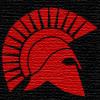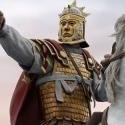-
Posts
410 -
Joined
-
Last visited
-
Days Won
1
greycat last won the day on December 2 2013
greycat had the most liked content!
Contact Methods
-
Website URL
http://steamcommunity.com/id/ThorStone
Profile Information
-
Gender
Male
-
Location
Seattle
Recent Profile Visitors
1.802 profile views
greycat's Achievements

Triplicarius (5/14)
34
Reputation
-

There's an article talking about us
greycat replied to ribasvilanova's topic in Introductions & Off-Topic Discussion
Google translator to English... http://translate.google.com/translate?sl=auto&tl=en&js=n&prev=_t&hl=en&ie=UTF-8&u=http%3A%2F%2Flacolumna.cat%2F0ad-videojoc-codi-programari-lliure-estrategia&act=url -
"De Bello Gallico" and Other Commentaries by Julius Caesar http://www.gutenberg.org/ebooks/10657 The Reign of Tiberius, Out of the First Six Annals of Tacitus by Tacitus http://www.gutenberg.org/ebooks/7959 Tacitus: The Histories, Volumes I and II by Tacitus http://www.gutenberg.org/ebooks/16927 The History of the Peloponnesian War by Thucydides http://www.gutenberg.org/ebooks/7142 Anabasis by Xenophon http://www.gutenberg.org/ebooks/1170 Hellenica by Xenophon http://www.gutenberg.org/ebooks/1174 The Cavalry General by Xenophon http://www.gutenberg.org/ebooks/1172 The Polity of the Athenians and the Lacedaemonians by Xenophon http://www.gutenberg.org/ebooks/1178 The Geography of Strabo, Volumes I to 3 by Strabo http://www.gutenberg.org/ebooks/44884 http://www.gutenberg.org/ebooks/44885 http://www.gutenberg.org/ebooks/44885 The Histories of Polybius, Volumes 1 to 2 by Polybius http://www.gutenberg.org/ebooks/44125 http://www.gutenberg.org/ebooks/44126 Plutarch: Lives of the noble Grecians and Romans by Plutarch http://www.gutenberg.org/ebooks/674 The History of Rome, Books 01 to 08 by Livy http://www.gutenberg.org/ebooks/19725 The History of Rome, Books 09 to 26 by Livy http://www.gutenberg.org/ebooks/10907 Contemporary writer Abbott, Jacob http://www.gutenberg.org/ebooks/author/2136
-
A modern scholars interpretation. "Contemporaries saw the great incursion into the west by Cimbri and Teutones at the end of the second century bc as a ‘Celtic’, not a Germanic, phenomenon. Rome’s dealings with ‘the Germani’ start, as with so many things, with Julius Caesar. He is usually credited with the very invention of the term: having come across the word Germani in a way which remains unknown to us, he used it to identify a distinct, non-Celtic, population, made up of various tribes (gentes) living for the most part east of the Rhine." The Alamanni and Rome 213–496 (Caracalla to Clovis) JOHN F. DRINKWATER
-
It seems modern archoligists tend to stay away from exactly equating Celtic culture with La Tène culture because the evidence found does not always coorelate with what ancient writers have concluded.
-

Mythos_Ruler's Playlist
greycat replied to Mythos_Ruler's topic in Introductions & Off-Topic Discussion
German band Deine Lakaien - Macedonian vocalist Alexander Veljanov and composer and multi-instrumentalist Ernst Horn -
I like this theorey best... "The Úlfhéðnar (singular Úlfheðinn), another term associated with berserkers, mentioned in the Vatnsdœla saga, Haraldskvæði and the Völsunga saga, were said to wear the pelt of a wolf when they entered battle. Úlfhéðnar are sometimes described as Odin's special warriors: "[Odin’s] men went without their mailcoats and were mad as hounds or wolves, bit their shields...they slew men, but neither fire nor iron had effect upon them. This is called 'going berserk.[2]'" In addition, the helm-plate press from Torslunda depicts (below) a scene of Odin with a berserker—"a wolf skinned warrior with the dancer in the bird-horned helm, which is generally interpreted as showing a scene indicative of a relationship between berserkgang... and the god Odin[3]"—with a wolf pelt and a spear as distinguishing features." "Most historians believe that berserkers worked themselves into a rage before battle, but some think that they might have consumed drugged foods." I think the later one is more likely since they made it ilegal to berzerk...In 1015, Jarl Eiríkr Hákonarson of Norway outlawed berserkers. How would they outlaw those who work themselves into a rage before battle?
- 680 replies
-
- millenium a.d.
- vikings
-
(and 1 more)
Tagged with:
-
Possible early migration path of Boii triibe = dotted line. So it is a possibility the Boii may have come from same loaction as the Celtic Parisii (Paris is name after them) or Germanic (acording to Tacitus)Trevari. (source of pictures:wikipedia)
-
The Scordisci seem to be important to La Tène culture also c. 450 BC. (The ethnic affiliation of the Scordisci has been debated by historians. Some refer to them as Celtic,Thracian or Illyrian or a Celtic mix of the above.)
-
The La Tene core is located roughly where the Germanic culture crosses with the Celtic cultures. The Treveri who claim Germanic origins (according to Tacitus) and are located in the center La Tene core circle that extends across the Rhine. The core territory of the La Tène culture (450 BC) is shown in solid green, the eventual area of La Tène influence by 50 BC in light green.
-
W We live in an era of comercialism, where companies always need to increase profit.The same companies that used to make towels now make paper towels. Bottled water can cost up to 1000 times the price of tap water. The Romans were masters of taking known ideas and improving upon them. They could not have acomplished what they did without building upon the ideas of other cultures though...
-
Glad I could help. I had a few suggestions to make it more accurate. Make the peak longer than base of house. So if the door is say 250 the peak would be about 500 (I used ruler in photoshop to get a rough ratio) Also the roof should extend down slightly past middle of door. (I think this steep angle is to keep snow off) Also there would be no chimney at this time. This is front angle of same house.
-
A 'war game' traditionaly prefers realism though... "These games are based upon real events and attempt to represent a reasonable approximation of the actual forces, terrain, and other material factors faced by the actual participants" http://en.wikipedia.org/wiki/Wargaming
-
This picture may help with the dimensions. It is from Open-Air Archaeological Museum Liptovska Mara - Havranok, Slovakia. Reconstructed shape of Celtic (La Tène) farmstead from the Upper Iron Age (300-100 B.C.)
-
Good topic. I just had to clarify Macedonian spear are not really pike. Pike refers to a medieval weapon that is similar to the Macedonian spear. I told Rome Total war people but they said unfortunately there is nothing they can do because it was a design choice and not a bug.
-
Illustration: SPARTANS AFTER THE BATTLE OF MANTINEIA, 418 BC After a Greek battle the winning side would usually set up a trophy. This would include a altar, where it would be set up, allowing victims to be sacrificed to thank the gods. The trophy would usually be positioned at the point the defeated enemy turned and ran, dropping their shields in the process to allow them to run faster. Now the Greek word for 'turn' is 'στροφη' (in English the letters translate to 'STROFI'). So when the altar was set up it became to be know as the STROFI, the place where the enemy turned and fled. This word has now filtered through to be in the English language as well where the word is now called TROPHY (All English words with a PH for a F have their origins from Greek words). This is why trophies are given to the victors, because they are allowed bragging rights after the victory. At the Battle of Champions, two opposing sides of exactly 300 each, fought it out. After both sides had exhausted themselves in the killing, the only ones left were 2 men on one side and only 1 injured opponent on the other. The 2 left the injured man on the field of battle in pity and returned home. The last man left set up a trophy as last man standing and claimed victory, even though his side lost more men.This is why the setting up of the trophy by the winner was important. source:http://www.ancientgreekbattles.net/Pages/90087_PhalanxHistory.htm



.thumb.png.ce58cea22940c255f5b0a735d5abee36.png)
